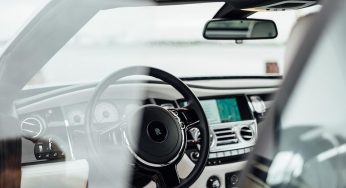Can cellular V2X comms replace DSRC standard?
Article By : ABI Research

While a DSRC mandate is imminent in the U.S., ABI Research expects cellular V2X’s steady growth, reaching 300 million global subscriptions by 2030.
Cellular technology for low-latency Vehicle-to-Vehicle (V2V) and Vehicle-to-Infrastructure (V2I) applications has come into a clearer view, thanks to LTE-V2X (LTE vehicle-to-everything) standard and the upcoming 5G standardisation–a challenge to IEEE 802.11p Dedicated Short-Range Communications (DSRC) standard. Hence, ABI Research finds autonomous level 4 and driverless level 5 vehicles will require V2V and V2I capabilities to achieve ultra-high reliability levels with carriers like Deutsche Telekom, Orange, SK Telecom, Telefonica and Vodafone already performing trials on automotive 4G and/or 5G use cases.
“The main challenge for cellular V2X is to get hold of dedicated spectrum needed for the Device-to-Device (D2D), V2V protocol,” Dominique Bonte, managing director and vice president at ABI Research. “While the intelligent transportation systems spectrum in the 5.9GHz band was made available in the U.S., Europe and other regions more than a decade ago, it remains reserved for DSRC. But this could change if or more likely when, cellular giants like Ericsson, Qualcomm and Samsung, unite and fight for lobbying power.”
The legacy IEEE 802.11p DSRC standard allows reliable low latency communication of basic safety messages between vehicles and between vehicles and roadside infrastructure. While a DSRC mandate seems imminent in the U.S., ABI Research expects cellular V2X to show steady growth, initially through LTE-V2X, reaching 300 million global subscriptions by 2030. At that point, 5G V2X will surpass it. Longer term, automotive OEMs will start to offer network-based low-latency, end-to-end automotive services.
“While cellular antagonists claim DSRC is more mature, reliable, secure and ready to deploy, it remains to be seen whether it will survive the onslaught of the cellular ecosystem or continue to coexist with future cellular alternatives,” Bonte concluded.
Subscribe to Newsletter
Test Qr code text s ss


